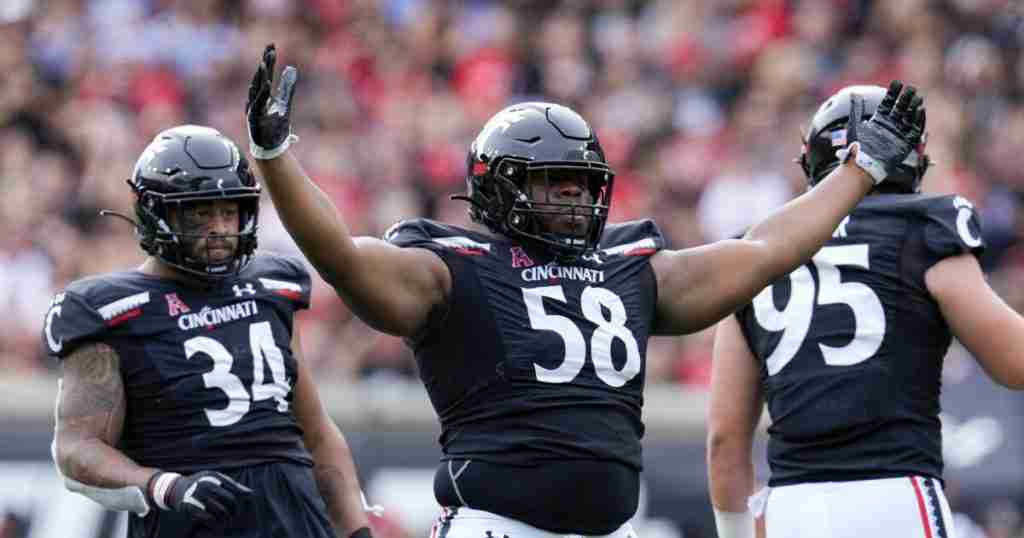CINCINNATI — Following your favorite college sports team now feels like a full-time job.
Gone are the days of having to register before the season starts and continue once it’s over. Now you find yourself monitoring the transfer portal and finding out which teams are offering the most money for your current players to jump ship.
Fans who follow teams closely know that the NCAA’s name, image and likeness policy changed everything in college sports. But what exactly is NIL?
Set name, image and likeness
The NCAA first adopted its name, image and likeness policy in 2021 after several states passed legislation allowing college athletes to be paid for work involving (you guessed it) their name, image and likeness.
The goal was for athletes to be paid for their work outside of performance or sports participation, thus avoiding any pay-for-play situation.
How it works?
How NIL works varies from school to school. Schools must follow guidelines established by state law, which means policies may differ.
For example, the governors of Kentucky and Ohio passed executive orders leading to the NCAA policy. Indiana did not. Indiana student-athletes can still be compensated like those in Kentucky and Ohio, but they are not required to follow any additional guidelines set by their state lawmakers.
Likewise, some states like Kentucky allow high school athletes to be paid for their name, image and likeness. Indiana and Ohio do not do this and therefore their rules and regulations are different.
Per NCAA policy, subject to state law, student-athletes may earn money in exchange for work performed outside of their athletic participation. This could include sponsored social media posts, TV commercials, or in-person promotions.
Schools can work with professional service providers to create a market for NIL opportunities. For example, student-athletes from Cincinnati, Kentucky, Ohio State and Xavier can be found on Opena website that offers endorsements, appearances, or posts for a fee.

via Opendorse
What is a NIL collective?
While Opendorse allows you to directly pay a student-athlete for a service, a collective like UC’s Cincy Reigns raises funds to help provide direct financial support to student-athletes for general NIL activities.
The collectives are not technically affiliated with the university, but run by fans or alumni. These collectives raise funds and help fans, donors and local businesses create opportunities for their favorite teams.
“These entities that are separate from the institution – even though many of them walk closely with their school and with their fundraising initiatives at a school, they are still separate,” said Braly Keller, head of the NIL and commercial knowledge at Ouvert.
UC alumni Travis and Jason Kelce’s recent event at Fifth Third Arena, the live recording of their podcast “New Heights”, was a fundraising opportunity for Cincy Reigns. A portion of the proceeds from ticket sales and Cincy Light beer sales from Cincy Reigns went directly to the collective.
At the University of Kentucky, members of the British football collective NIL, The Club of 15, was able to attend a private concert by Grammy Award-winning artist John Legend. The money raised went directly to support the football program.
How are NIL transactions or collectives monitored?
The NCAA says its national office will not monitor schools for violations of NIL policies, only investigating possible violations of fee-for-service, improper incentives or other policies.
“Schools are required to enforce and report potential violations of NCAA legislation that remains applicable, including bans on pay-to-play and improper inducements,” » declares the NCAA on its website.
Although the NCAA Division I Board of Directors has directed its council to develop plans for NIL protections, nothing has yet been finalized. College sports leaders have called for federal regulations, but those, too, are not in place at this time.
“It’s crazy,” said Tremaine Dees, collegiate director at global full-service sports management and marketing company EZ Sports Group, of what he’s learned about the changing state of NIL. “I mean that’s going to continue to change as well…(there’s) really no legislation on it at the moment, so it’s pretty open-ended.”
How does the lack of federal regulation impact schools?
Different rules and regulations mean that each school and state is responsible for themselves. This could mean that some schools are stricter than others.
“Obviously different states have different laws … and different universities handle these things differently,” said Brett Ryback, assistant head coach and director of player development for Kentucky men’s basketball. “Everyone sees things so differently that you’re almost constantly wondering why this rule is in place or this rule isn’t in place.”
Several federal bills have been introduced in Congress to address this issue since the policy was first enacted in 2021. Yet nothing has been passed yet.
What happens next?
We spoke with school administrators, collective leaders, current student-athletes and local prospects to better understand the state of NIL in college athletics and what people hope to see next.
In the coming weeks, we will introduce you to them and their roles in this ever-changing world. We also plan to continue reporting on any changes in the NCAA as well as local team movements.
